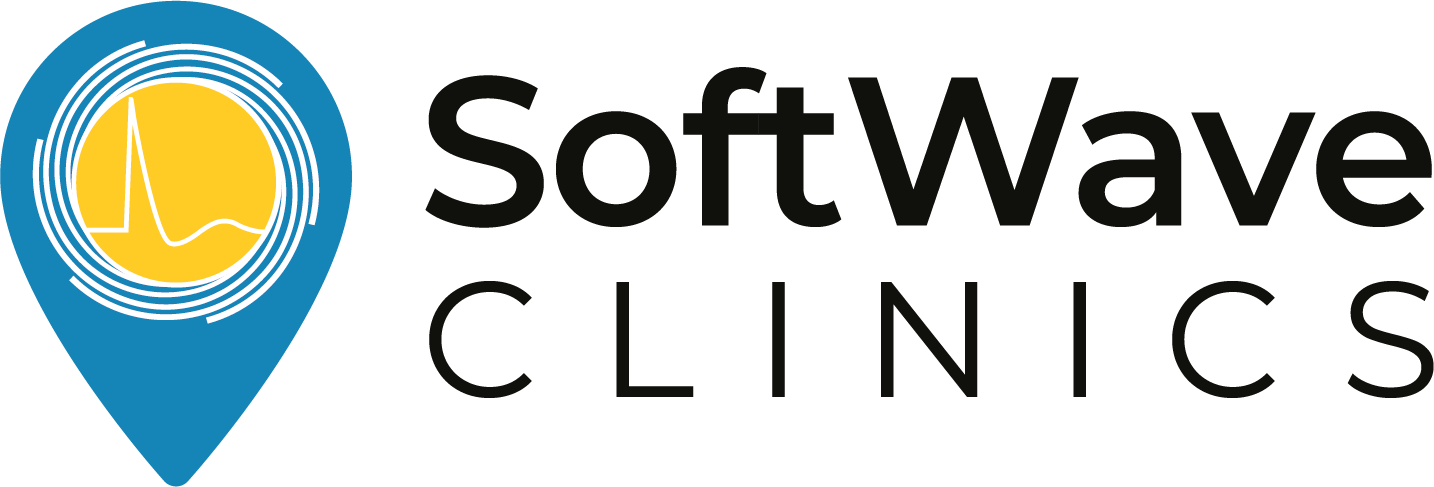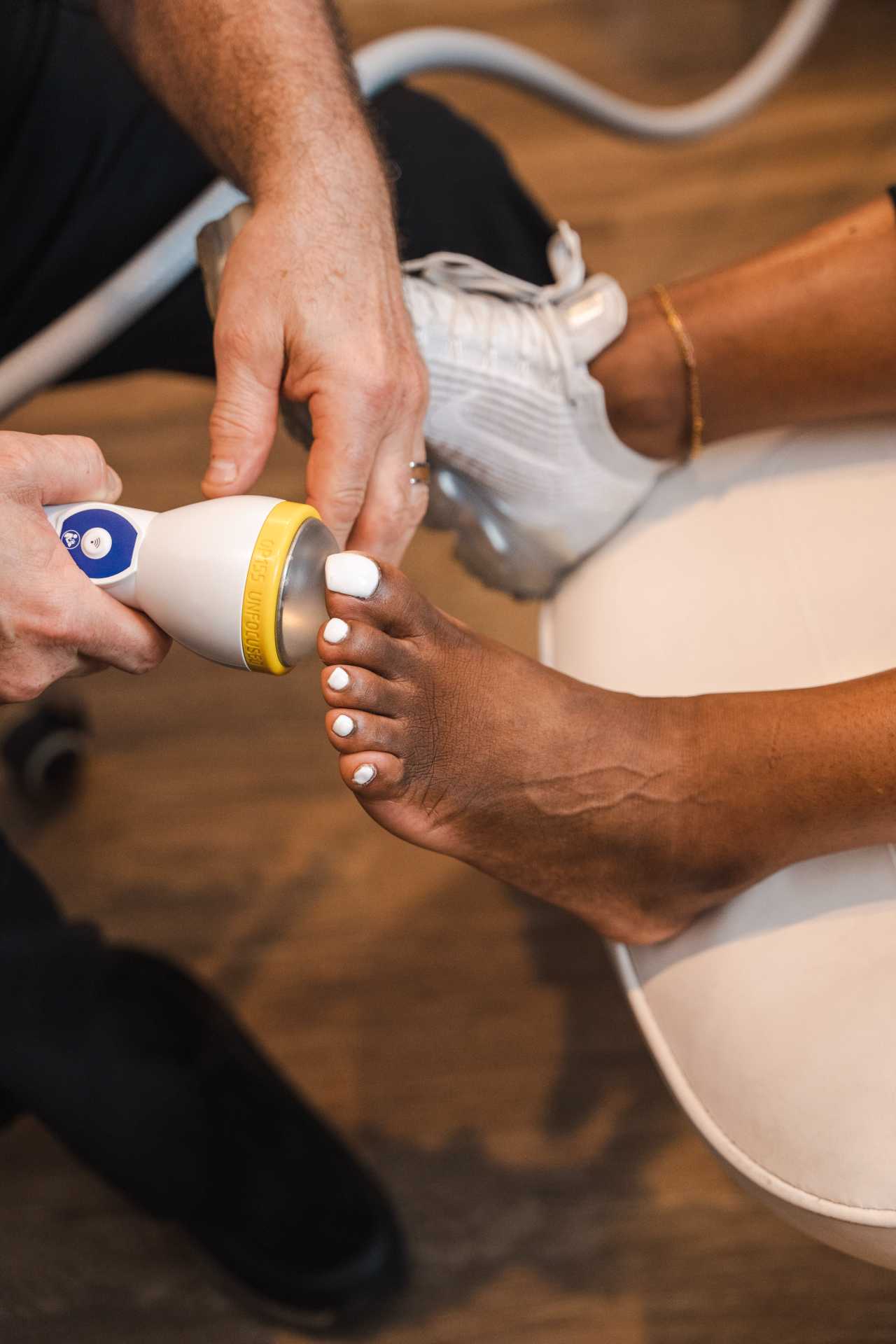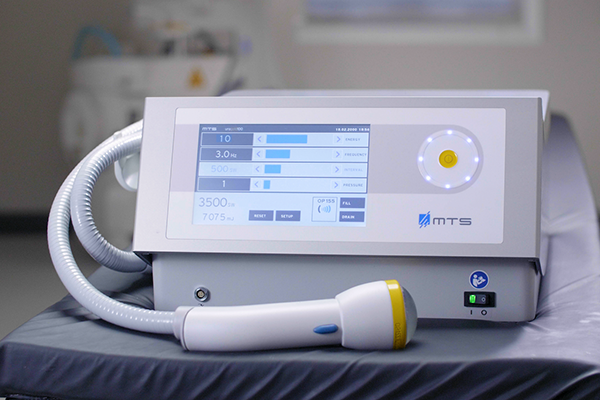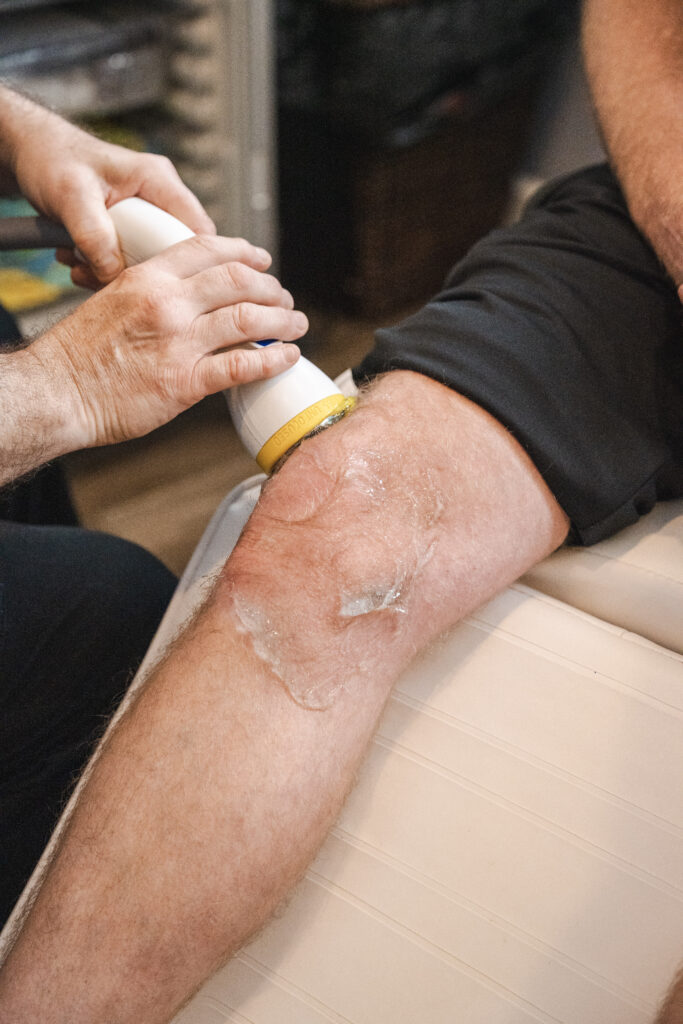SoftWave Therapy
SoftWave Therapy is at the forefront of non-invasive treatments for plantar fasciitis. It utilizes low-energy, unfocused acoustic waves, which are much gentler than the high-energy waves used in traditional shockwave therapy. These waves stimulate the cells responsible for healing and regeneration in the affected area.
For individuals with plantar fasciitis, SoftWave Therapy offers significant benefits. It enhances blood circulation and stimulates the body’s repair mechanisms, targeting the inflammation and micro-tears in the fascia that cause pain. Patients often report not just reduced pain but also increased mobility and a quicker return to daily activities. Treatment sessions are brief, usually around 10-15 minutes, and most patients notice an improvement after just a few sessions.
Iontophoresis
Iontophoresis is a technique that uses electrical currents to deliver anti-inflammatory medication directly into the painful area of the foot. This method allows for a targeted approach, concentrating the medication right where it’s needed, thereby maximizing its effectiveness and minimizing systemic side effects.
The process involves placing two electrodes on the skin, one of which contains the medication. When the device is activated, the electrical current drives the medication through the skin and into the inflamed tissues. For plantar fasciitis sufferers, this means directly addressing the inflammation without the gastrointestinal risks associated with oral medications. The sessions are typically quick, non-invasive, and can be easily repeated for sustained relief.
Botulinum Toxin Injections
Botulinum toxin, commonly known as Botox, offers an unconventional yet effective treatment for plantar fasciitis. When injected into the foot, it temporarily paralyzes the small muscles. This reduces the tension and strain that contribute to the pain of plantar fasciitis.
The procedure involves a series of injections into the affected area. While the thought of needles in the foot may be off-putting, many patients find the relief they experience to be well worth it. The effects can last for several months, offering a significant period of pain relief. As with any treatment, discussing the potential risks and benefits with a healthcare provider is important to ensure it aligns with your health profile and treatment goals.
Platelet-Rich Plasma Injections
Platelet-Rich Plasma (PRP) therapy uses your blood to promote healing. Blood is drawn, then processed to concentrate the platelets, which are rich in growth factors that stimulate tissue repair. The concentrated platelets are then injected back into the affected area of your foot.
This treatment taps into the body’s natural healing processes, promoting the repair of the damaged fascia tissue. For those with plantar fasciitis, this can mean not just pain relief but actual healing of the underlying issue. The procedure is relatively simple and can be done in an outpatient setting, typically with a quick recovery time. While some discomfort may be associated with the injections, the use of one’s own blood reduces the risk of adverse reactions.
Finding the Right Treatment for You
Navigating the landscape of plantar fasciitis treatments can be daunting. Each option comes with its own set of considerations, from the specifics of the procedure to the expected recovery time and potential risks. It’s essential to engage in a thorough discussion with healthcare professionals, considering your unique situation, including the severity of your condition, your overall health, and your lifestyle.
Armed with the right information and the support of a healthcare team, you’re well-positioned to make informed decisions about your treatment.





